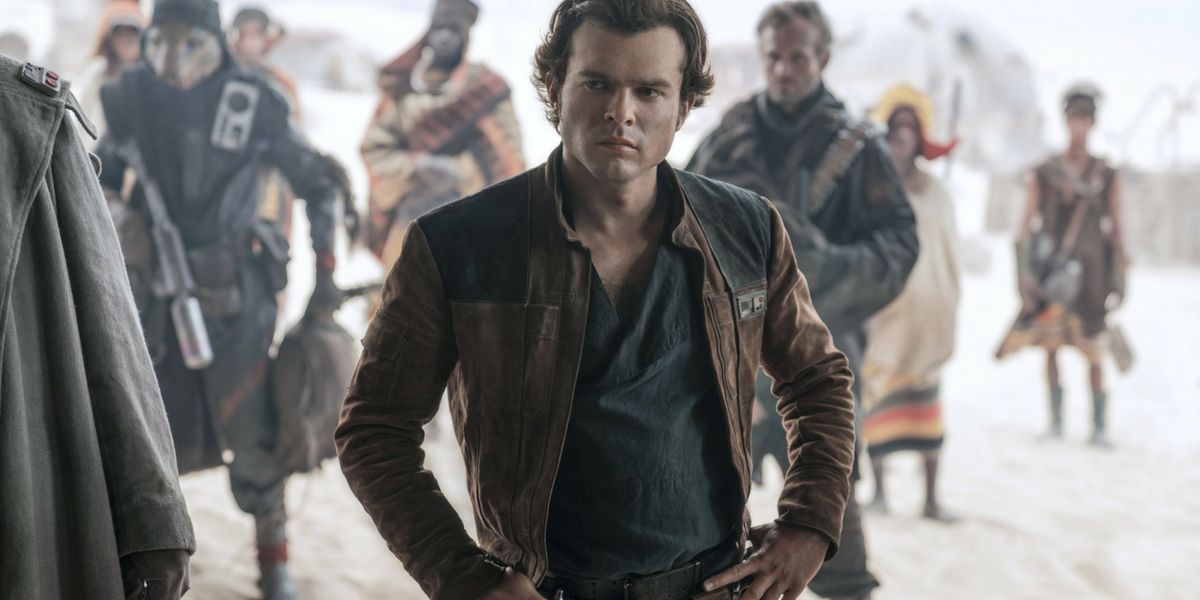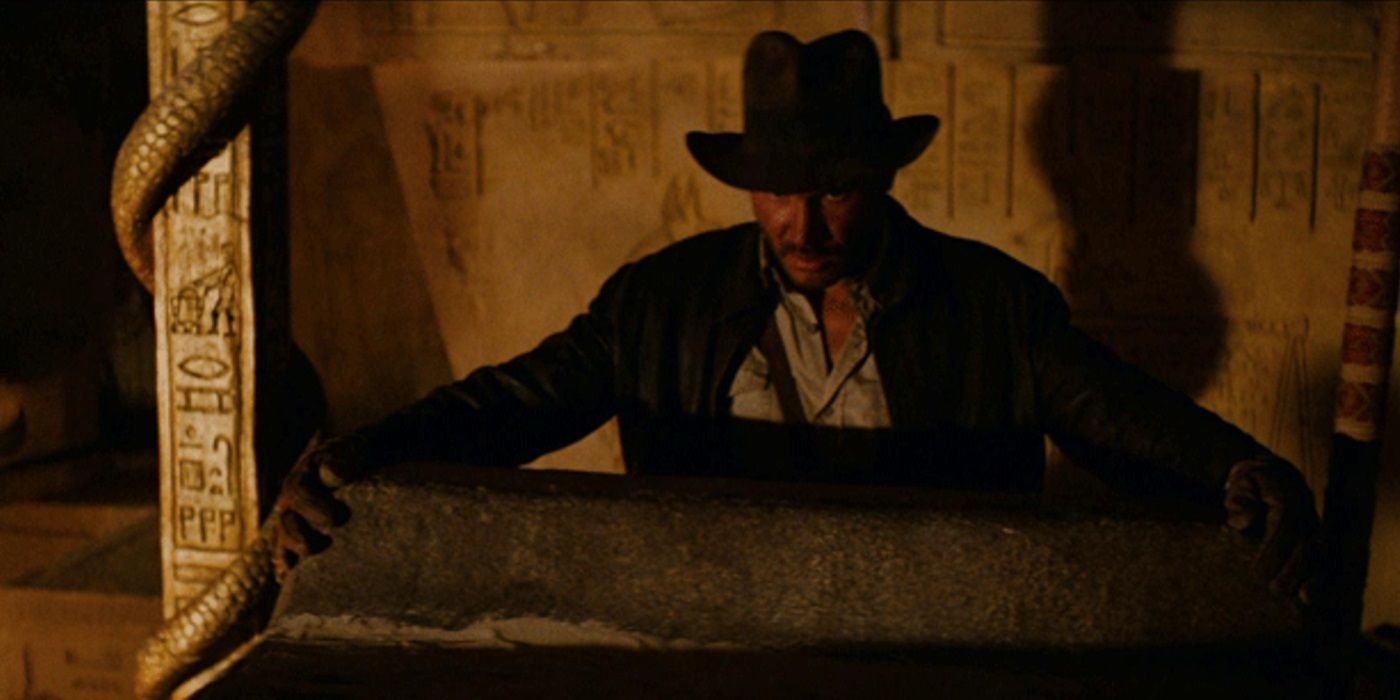
Solo: A Star Wars Story contains a notable number of Easter eggs, ranging from the Sabacc card game to a climactic cameo from Darth Maul. Among the quieter ones is a nod to Indiana Jones: the appearance of the idol from the opening of Raiders of the Lost Ark. It remains one of Solo’s more endearing in-jokes, but it also raises some intriguing questions about the connection between the Star Wars universe and planet Earth.
The Easter egg itself appears among the trophies of Dryden Vos: the Chachapoyan Fertility Idol from Raiders. Beyond the shared creator in George Lucas and the shared performer in Harrison Ford, director Ron Howard cited Lawrence Kasdan, who penned the screenplay for both Solo and Raiders, as reasoning behind the inclusion. While this was meant to be a more of a meta connection between the two franchises, the in-universe implications not only link Indiana Jones to Star Wars, but provide a potential thread for a kind of Star Wars story that fans haven’t seen much of.

The Idol itself has cultural roots in the Incan Empire, which arose in Peru around 1400 CE. The figure represents Pachamama, a fertility goddess associated with harvests, mountains and springtime. Additionally, the Incans possessed comparatively sophisticated knowledge of astronomy, and often built religious sites in locations that held astronomical significance. This supports the notion – fictional, but both fascinating and appropriate to a pulp universe like Indiana Jones – that the Incans received visitors from outer space. And if the Idol once appeared in a galaxy far, far away, it’s not hard to connect those visitors to Star Wars.
Den of Geek discusses one expanded universe fan theory at length. The SoulCalibur series of fighter games includes Star Wars characters such as Yoda and Darth Vader, and a little detective work places their appearance in the video game franchise at approximately 1593 AD. In turn, this means that these characters could have been living around the time of the fall of the Incan Empire, bringing the two timelines close enough to make some reasonable speculations.

The Incans themselves were suffering some disturbing parallels to the rise of the Star Wars Empire around that time in history. The Spanish had arrived some sixty years earlier, and they not only took control of the Incans, but spread smallpox and other diseases to the populace. In accordance with the events established in Raiders, faithful locals took their religious icon deep into the jungle, both to save it from their conquerors and to isolate themselves from infection. By extension, that kept the idol safe from treasure hunters over the years. (And it goes without saying: grave robbing is not okay, Indy.)
Given these circumstances, it is possible that a visitor from the Star Wars universe – who might know a few things about fleeing an evil empire – helped them escape their conquerors, and even left an object behind to inspire them. Such an object could have represented seasonal cycles of death and rebirth, an idea that matches the philosophy of the Force quite well. This suggests the visitor was a Jedi, or at least someone strong with the Light Side. Furthermore, the Incans’ astronomical sophistication could've provided a wayward intergalactic fugitive with needed information about their relative position in the galaxy, which meant (among other things) a means to contact help from the Star Wars side of the universe or an escape route if unfriendly agents came looking for them.

The Idol’s appearance echoes at least two memorable Easter eggs in the Indiana Jones films that pay homage to Star Wars and suggest additional points of contact. Club Obi-Wan served as the opening setting for Indiana Jones and the Temple of Doom, while R2-D2 and C-3P0 graced Raiders as hieroglyphics on the wall of the Well of Souls. Both Chinese and Egyptian cultures stretch back thousands of years, and while these visitations might have taken place under less dramatic circumstances than the Incans, it made enough of an impression for evidence to remain. And like the idol, they suggest that whoever visited was an adherent of the Light Side, and thus may have influenced those two cultures at some point.
That’s a lot to hang on a few moments designed to give fans a wink and a chuckle. (And it avoids questions of cultural appropriation, which both Star Wars and Indiana Jones have been guilty of.) Nevertheless, the possibilities can go in unexpectedly creative directions. Star Wars is deliberately timeless, both as a means of heightening its fantasy elements and avoiding the kinds of continuity issues that can plague more Earth-centric franchises. In spite of this, Easter eggs like the one in Solo point to more definitive ways Earth might have interacted with that universe.
0 Comments